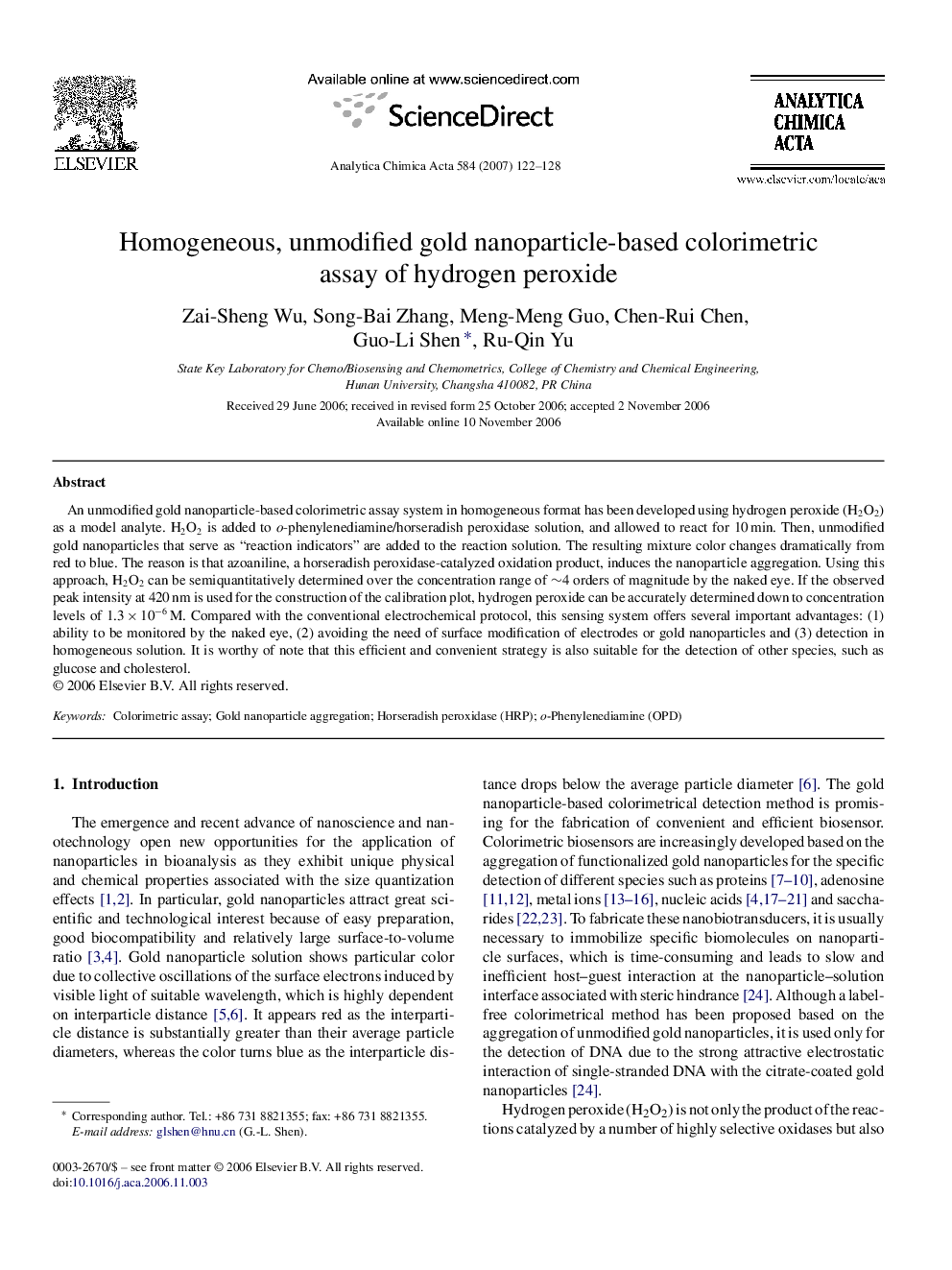| Article ID | Journal | Published Year | Pages | File Type |
|---|---|---|---|---|
| 1171258 | Analytica Chimica Acta | 2007 | 7 Pages |
An unmodified gold nanoparticle-based colorimetric assay system in homogeneous format has been developed using hydrogen peroxide (H2O2) as a model analyte. H2O2 is added to o-phenylenediamine/horseradish peroxidase solution, and allowed to react for 10 min. Then, unmodified gold nanoparticles that serve as “reaction indicators” are added to the reaction solution. The resulting mixture color changes dramatically from red to blue. The reason is that azoaniline, a horseradish peroxidase-catalyzed oxidation product, induces the nanoparticle aggregation. Using this approach, H2O2 can be semiquantitatively determined over the concentration range of ∼4 orders of magnitude by the naked eye. If the observed peak intensity at 420 nm is used for the construction of the calibration plot, hydrogen peroxide can be accurately determined down to concentration levels of 1.3 × 10−6 M. Compared with the conventional electrochemical protocol, this sensing system offers several important advantages: (1) ability to be monitored by the naked eye, (2) avoiding the need of surface modification of electrodes or gold nanoparticles and (3) detection in homogeneous solution. It is worthy of note that this efficient and convenient strategy is also suitable for the detection of other species, such as glucose and cholesterol.
